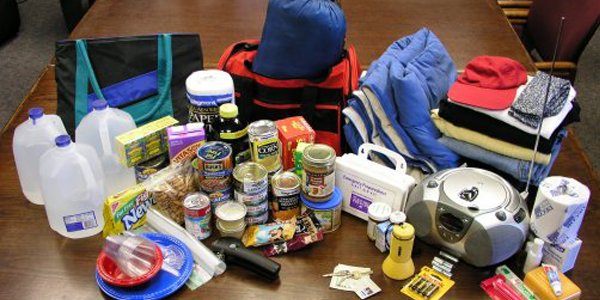Just How to Establish an Extensive Emergency Situation Readiness Plan
In the realm of preparedness, developing a detailed emergency plan is not just a task to check off a list; it is a necessary keystone of any type of organization or individual's strength method. From natural disasters to unexpected dilemmas, the capacity to expect, alleviate, and react effectively can indicate the distinction between chaos and control. By thoroughly crafting a plan that resolves different aspects of emergency monitoring, consisting of threat evaluation, interaction methods, resource allocation, and calculated decision-making, one can lay a strong structure for guarding procedures, lives, and possessions. The true efficacy of such a plan exists not only in its creation however additionally in its recurring upkeep and adaptation to developing dangers and obstacles.
Importance of Emergency Situation Preparedness
Emergency situation readiness is vital for minimizing prospective threats and making certain the security of individuals and areas. In today's globe, where natural calamities, public health dilemmas, and other emergency situations can strike without warning, being prepared can make a substantial distinction in lessening the influence of these occasions. By having a well-balanced emergency readiness strategy in area, people and organizations can react effectively, safeguard lives, and minimize building damage.
Among the primary reasons that emergency preparedness is essential is its duty in conserving lives. When emergencies happen, having a plan that lays out clear procedures for emergency, communication, and evacuation response can aid people act quickly and emphatically. This can prevent injuries and casualties by ensuring that individuals understand what actions to require to stay safe
Moreover, emergency situation readiness enhances the resilience of communities. By fostering a culture of preparedness and planning for numerous circumstances, areas can recuperate quicker from disturbances and disasters. This durability is necessary for keeping security, connection of procedures, and total well-being in the face of misfortune.
Assessing Potential Dangers
Considering the relevance of being planned for unexpected occasions, the initial action in developing an effective emergency situation readiness plan involves completely evaluating and assessing potential threats. This analysis requires a detailed evaluation of all possible hazards that might impact the organization, thinking about factors such as location, industry, and historical data on occurrences. By identifying these threats, organizations can prioritize their preparedness efforts and allot resources efficiently to minimize the most considerable dangers.
Common dangers that companies may face include all-natural disasters like floods, earthquakes, or cyclones, technological risks such as power interruptions or information violations, along with human-caused threats like mishaps or willful acts of physical violence. Conducting a risk assessment additionally includes considering the possible influence of these events on the company's procedures, staff members, consumers, and track record. By performing an extensive threat evaluation, companies can establish customized emergency feedback strategies that resolve their particular vulnerabilities and ensure reliable readiness for any potential dilemma.
Producing a Communication Plan
Establishing a clear and extensive interaction strategy is important for effective emergency situation readiness within companies. In times of situation, communication plays a critical function in making certain the safety and health of employees, stakeholders, and the neighborhood. A well-thought-out communication strategy ought to lay out clear lines of communication, mark essential workers in charge of interaction jobs, and develop procedures for disseminating details promptly and accurately.
One key element of producing an interaction strategy is identifying alternative and key interaction networks (EMERGENCY PREPAREDNESS). These can include email, message messaging, phone trees, social media systems, and public address systems. It is important to make certain that these channels are reputable, accessible, and frequently evaluated to assure their effectiveness throughout emergencies

Building an Emergency Situation Package
Offered the critical importance of preparedness in times of dilemma, a key element that organizations must attend to is the establishment of an emergency situation kit. An emergency situation kit serves as a critical resource that can aid mitigate the influence of unforeseen occasions, guaranteeing that vital products and tools are readily offered when required most. When setting up an emergency package, it is crucial to consider the specific needs and circumstances of the company. Fundamental items such as water, non-perishable food, emergency treatment supplies, flashlights, batteries, and a battery-powered radio are basic parts of any kind of emergency package. Additionally, companies need to consist of important files, such as call checklists, insurance coverage info, and emergency situation feedback plans, in waterproof containers within the kit. Regularly reviewing and updating the materials of the emergency kit is necessary to see page guarantee that materials are current and useful. By proactively preserving an emergency and constructing set, companies can boost their readiness to successfully react to crises and protect their properties and personnel.
Developing Emptying Treatments
To guarantee the security and orderly evacuation of personnel throughout emergencies, companies need to establish effective and clear discharge procedures. Discharge procedures ought to incorporate a series of prospective situations, consisting of fires, natural catastrophes, or other emergency situations that need swift discharge.

Additionally, organizations ought to establish a system for accountancy for all workers during a discharge to guarantee that everyone has securely left the facilities. Interaction plays a vital duty in discharge treatments, with clear directions on exactly how to evacuate and when to do so. Routine review and updating of emptying procedures based on comments and altering conditions are important to keeping the effectiveness of the strategy.
Verdict
In verdict, establishing an extensive emergency readiness plan is important for guaranteeing the security and well-being of individuals in the occasion of a calamity (EMERGENCY PREPAREDNESS). By analyzing potential risks, creating a communication plan, building an emergency situation package, and developing discharge organizations, people and treatments can be better outfitted to react properly to emergency situations. It is very important to prioritize readiness efforts to mitigate the impact of disasters and protect lives and home
In the realm of preparedness, establishing an extensive emergency situation strategy is not just a task to check off a listing; it is a vital cornerstone of any type of company or person's strength technique. When emergencies happen, having a plan that lays out clear treatments for communication, emergency, and discharge response can assist people act quickly and decisively. you could check here. By conducting an extensive risk evaluation, companies can develop tailored emergency response plans that address their particular vulnerabilities and ensure effective preparedness for any kind of possible crisis
Creating a detailed and clear communication plan is vital for effective emergency readiness within companies. By analyzing potential dangers, creating a communication plan, developing an emergency package, and developing discharge companies, procedures and individuals can be much better geared up to respond effectively to emergency situations.